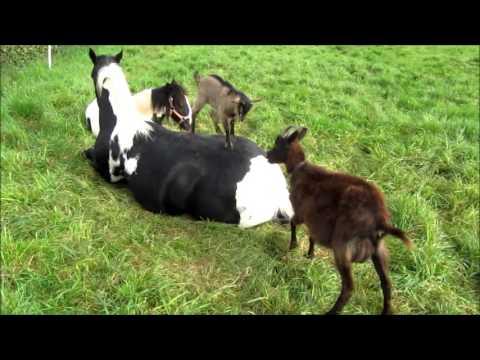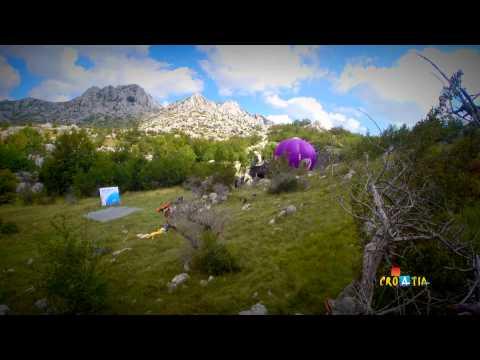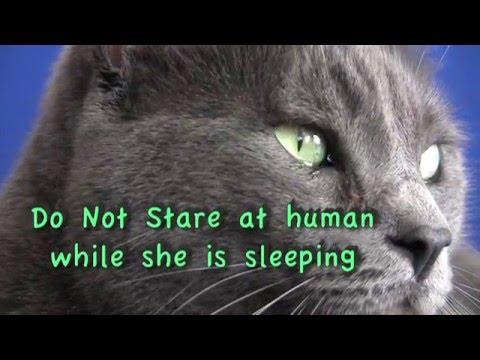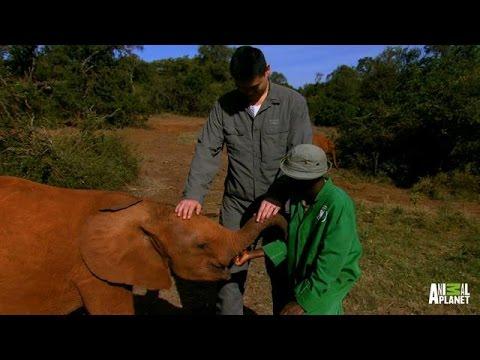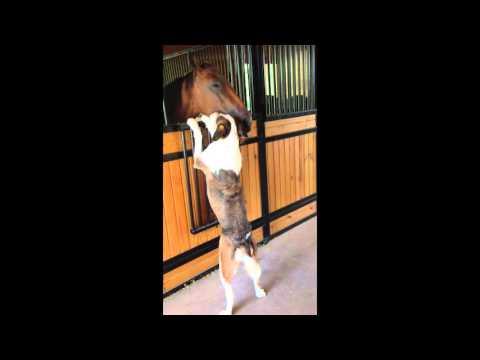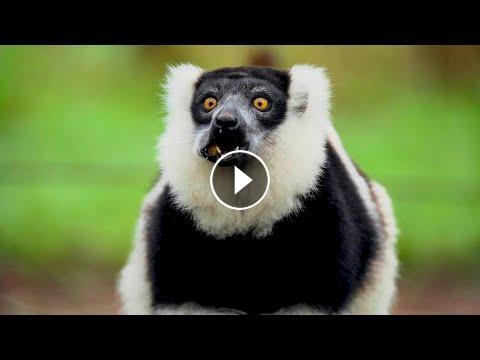Hannah Stitfall meets the world's fastest land mammal and the biggest pollinator in the world!
Video Script::
[Music] there are some species that we just want to cuddle and this is all to do with their features I'm Hannah sniffle and today were visiting wild place project on the outskirts of Bristol where we'll be taking a look at some species that trigger this response in us humans even though the species that we want to cuddle as some of the top predators on earth [Music] the European brown bear an iconic species that up until roughly 500 years ago was found nearly everywhere across the continent now brown bears are restricted to certain areas with some of the highest populations being found in the central south eastern mountain ranges of europe it is estimated now that around 17,000 bears are found across the continent in scattered populations which thanks to conservation efforts in some areas are slowly increasing but what is it about brown bears that we simply find adorable with their thick fluffy fur coats that protect them from the cold cute but announced and short tufty ears we just want to cuddle them when we see something fluffy round and cuddly it can trigger a response in us which floods the human brain with feel-good chemicals it's been thought that when we are babies and small children having a fluffy cuddly toy can ease stress and anxiety aid our development and begin to develop the need for us to nurture for others so if when you see a brown bear you go hurry inside your first best friend was most likely a cuddly toy perhaps even a teddy bear when it comes to big cats they don't get much cuter than our next species once found across the African continent on the open plains dry forests and grasslands they are known to be the fastest land mammal on earth the cheetah [Music] these distinguished big cats are outstanding to watch with their pale yellow coats covered in black spots and white underside they are a standout species of the African plains their faces have curved black lines extending from their big amber eyes to the corners of their mouths with little furry round ears they are exceptional hunters but mainly rely on their speed and the element of surprise to catch their prey they can reach around 60 miles per hour over short distances but why do we find a formidable African carnival so lovable the cheetah has facial features that remind us of kittens but also babies big forward-facing eyes compared to head size is a feature that newborn babies howl and is something that makes us want to take care of them also a Cheetahs rounded ears and soft furry appearance are characteristics that initiate the caregiving response in humans much like domesticated cats do this theory is still debated but when some people look into a cheetahs eyes they simply find them irresistible from the African plains to the island of Madagascar our next species is undeniably enchanting and is found nowhere else on earth the black-and-white ruffed lemur this visually captivating species is found in the forests of eastern Madagascar and weighing in at around 4 kilograms is one of the largest living lemur species on the planet as their name suggests they have black and white fur with a distinctive white gruff around their necks and piercing yellowy orange eyes they have the second loudest call of any primate and use their long nimble tails to help them balance in the treetops learn to be frugivores they feed almost exclusively on fruits but they will also feed on seeds and nectar at different times of year using their long tongues to reach inside flowers to lap up the nectar they also have the title as being the largest pollinator on earth as they travel from tree to tree they spread nectar and also deposit seeds in their droppings making them incredibly important for the forests of Madagascar black and white ruffed lemurs are highly sociable animals mostly living in family groups of around five individuals although group size can vary from sometimes just two up to 16 strong they're playful inquisitive nature and fluffy faces make them simply irresistible to watch and they love exploring their environment with their noses always on the lookout for a fruity meal our next animal we have domesticated over thousands of years to become none other than man's best friend the European wolf one of the most revered animals in the world the wolf is an animal of myths and stories which we have all grown up with European wolves are often referred to as gray wolves but their coats are in fact a more cream and sometimes brown color which in the thick forests of Central Europe helps them disappear into their surroundings [Music] wolves are highly sociable animals and pack hierarchy is very important with every pack member knowing its place [Music] at one time it was thought we domesticated wolves to aid with hunting but now it is more widely accepted that wolves came into early human settlements to scavenge on our leftovers becoming friendlier and eventually becoming our companions their similarity to our much-loved family pets make some of us have a deep affection for wolves it's been found that our cute canine counterparts can lower our stress levels even something as simple as playing fetch or stroking a dog increases levels of feel-good hormones making us have an overwhelming feeling of happiness maybe the big bad wolf isn't as bad as you may think [Music] during our time at Bristol wild place project we were lucky enough to get a behind-the-scenes look at what it's like to look after the fastest land mammal on earth we teamed up with Zoe one of the animal keepers to help with feeding the Cheetahs so these are our three lovely cheetah brothers in the middle that's Brooke Oscar and just over that side is Jake a little bit grumpy these cats they're usually quite impatient to be fed so we're gonna go in we're gonna strap them into a secure area then we're gonna put some food in and let them in and then we're gonna go and spread the food out on the other side okay excellent and what do you feed them so they're carnivores so they eat meat so today they've got some lovely quails to share between them we try to feed them as much whole prey as we can so make sure they're getting everything in their diet here that they would in the wild lovely there look I'm not so we're gonna go in the side so I'm gonna close this door it depends what we're feeding them so today because it's quail sometimes we will split the feed up throughout the day and we're gonna put all of this out now just so we can give them a nice big scatter feed which will keep them nice and active but yeah sometimes we feed them a couple of times a day and sometimes will feed them rabbit or something like that instead and that's usually just one today because they'll normally get one rabbit eat or something like that so he's watching YouTube [Music] speed in the fastest lap yep [Music] so the conservation of cheetahs is really really important now isn't it yeah definitely recent estimates of the numbers in the world are quite low they're anywhere between 7,000 and 10,000 which is really not a huge number at all so it's really important that we try and look after them as best as we can and how long have you had these three boys here it's coming up to six years now so it's been a good well they're nice and settled quite happy living together living in a group like this is quite natural for male cheetahs and particularly brothers and they often live together in the wild like this and obviously as part of the breeding programme not everywhere can breed them all at the same time so it's important to have places that can hold non breeding groups ready for when the offspring a old enough to lose their parents and need somewhere else to live well I think they're absolutely wonderful I've just fed the fast [Laughter] [Music]
- Category
- Pets And Animals
- Tags
- animal facts for kids, bear facts, lemur facts, bristol zoo animals, bbc documentary, bbc, bbcearth, bbc earth, science of cute, cheetah facts, facts about animals, wolf facts, big cat, big cat rescue, zoo, cats, cute cats, behind the scenes, cute animals, bear facts for kids, Wolf facts for kids, This Adorable Lemur is the World's Biggest Pollinator, the science of cute






